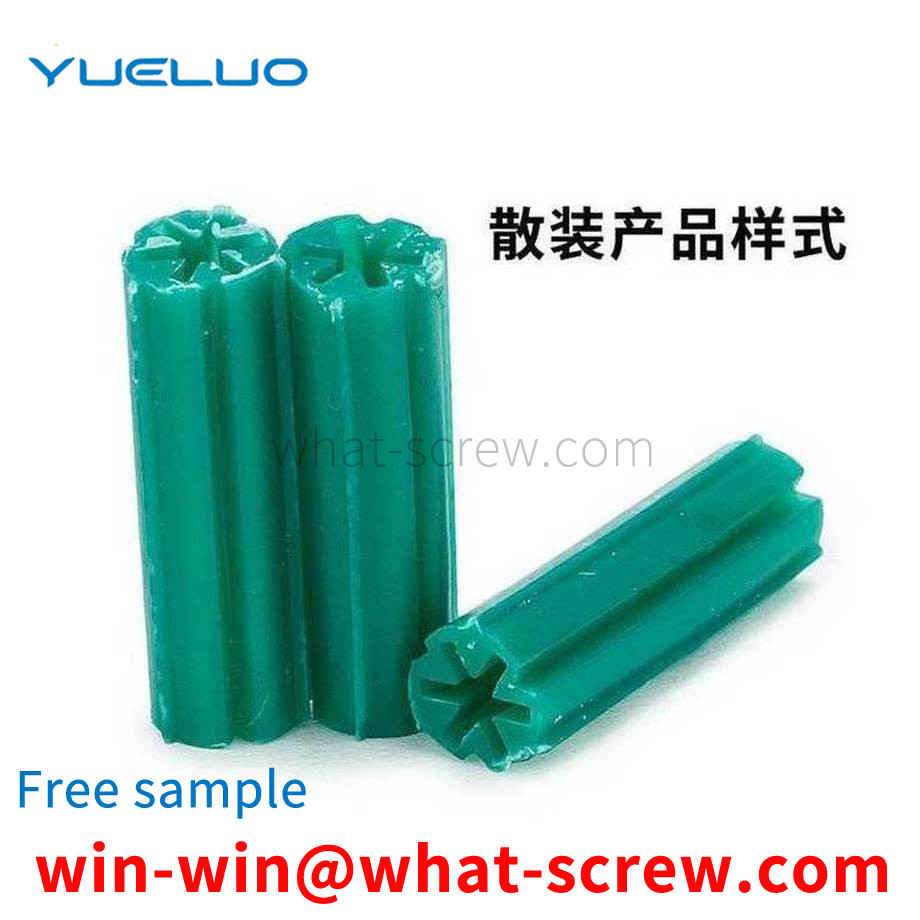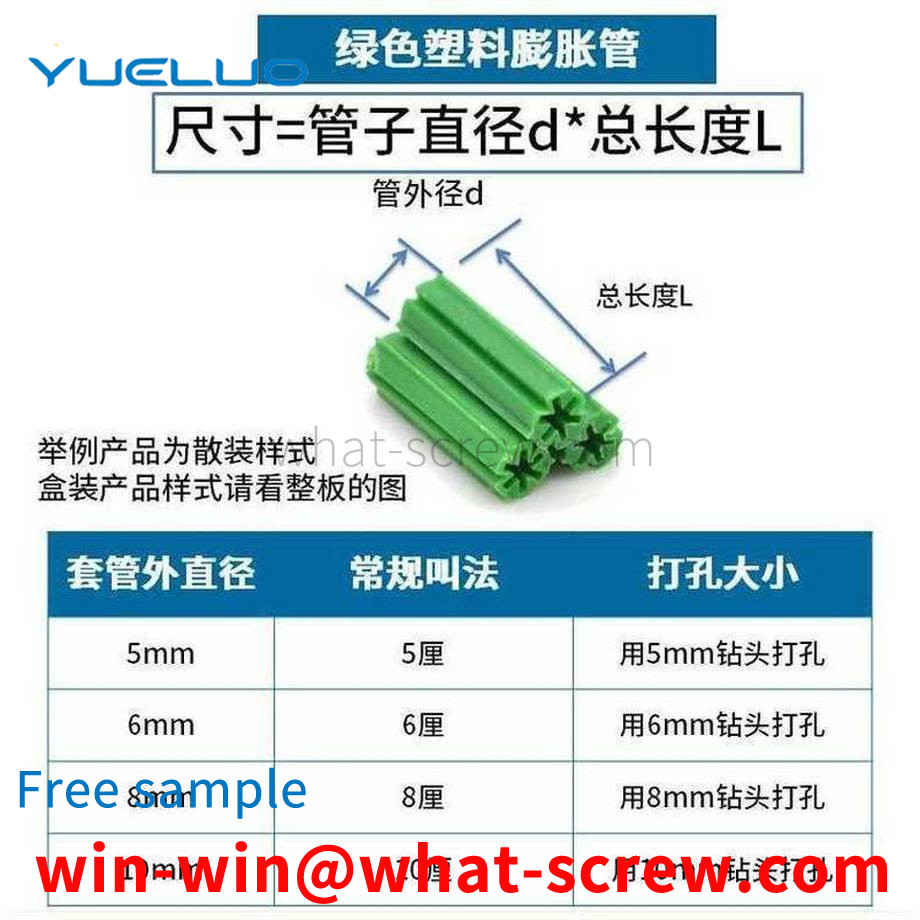In the riveting operation, the rivet used is composed of a mandrel and a deformed collar. When in use, a through hole is drilled on the two components to be connected, and then the head of the rivet is passed through the through hole and clamped by a rivet. The tail of the rivet will break the rivet, the head of the rivet and the deformed collar remain in the through hole, and the whole riveting process is completed. The existing pull rivets have the following shortcomings: first, the parts where the pull rivet and the two components are connected cannot be completely and tightly fitted, which meets the requirements of non-sealing for parts that have waterproof and leak-proof requirements; second, the existing pull rivets The separation groove of the rivet mandrel is close to its head. When the mandrel is broken by the rivet during the riveting process, basically only the head of the mandrel remains in the deformation collar, and the connection of the two components depends on the deformation of the collar. Under the action of compressive stress, the inside of the deformed collar becomes hollow due to the breaking of the mandrel, and cannot bear large shear stress.
Inch Screws C-1: Thread Code: The denominator is marked as 8, and then the numerator is directly called the number. Ex: 1/8 x 0.50 –PPB: 1 Thread screw x 0.50” long, PPB Ex: 5/16 x 0.50 –PPB = 2.5/8 x 0.50-PPB : 2 ½ inch screw x 0.50” long, PPB Ex: 5/32 x 0.50 –PPB =1.25/8 x 0.50-PPB: 1 ½ ½ inch screw x 0.50” long , PPB Ex: 1/4 x 0.50-PPB= 2/8 x 0.50-PPB: 2-point screw x 0.50” long, PPB Note: Coarse or fine pitch is sometimes indicated. UNF: Fine pitch: more commonly used in the electronics industry UNC: Coarse Thread: More commonly used for heavy machinery construction. Ex: 3/8 x 0.50, UNF –PPB: 3 point fine thread screw x 0.50” long, PPB. C-2: Length Code: In inches, must be multiplied by 25.40 is converted to mm. Measured with a buckle gauge, it is a metric thread when it matches the metric thread, and an inch thread when it matches the inch thread. You can also use a caliper to measure the outer diameter and pitch of the thread. The outer diameter of the metric thread is in millimeters, Such as 6, 8, 10, 12, 18, 20 mm, etc., the pitch is also in millimeters, such as 0.5, 0.75, 1, 1.5, 2, 3, etc. The outer diameter of the imperial thread is in inches, (per inch Equal to 25.4 mm) such as 3/16, 5/8, 1/4, 1/2, etc. Therefore, the reading of the outer diameter with a metric caliper often has irregular decimals. The inch pitch is expressed by how many teeth per inch. Set the caliper at 25.4 mm, align one caliper tip with the thread cusp, and the other caliper tip, if aligned with the thread cusp, is an inch thread, and if the thread cusp is not aligned, it should be a metric thread. The tip is printed on the white chalk. The chalk is clear and easy to measure. To measure the metric pitch, you should measure a length, such as 10, 15, 20, millimeters, etc., count how many teeth are included, and calculate the pitch in inches. The specified thread specification is inch thread, such as: G1. Metric threads are specified in metric units of millimeters. Such as: M30. The imperial system is determined by how many teeth there are in one inch (2.54 cm), generally a 55-degree angle. The metric system is the pitch determined by the distance between the two tooth tips, usually a 60-degree angle anchor screw: tighten the machine, etc. Screws for use on the ground. Also called anchor bolts. The difference between British and American screws is difficult to distinguish visually. The difference between British and American screws is that the rolling angle of British screws is 55 degrees, while the rolling angle of American screws is 60 degrees. These two standard screws are used in most screws. It can be used in general, but 1/2 size screws are not allowed, because the standard thread of inch 1/2 is 1/2-12 teeth, while the American system is 1/2-13 teeth.
Copper nuts, also known as embedded nuts and embedded copper nuts or plastic embedded nuts, are divided into hot melt copper nuts, hot pressed copper nuts, embedded copper nuts and ultrasonic copper nuts according to different methods of use. This product is widely used in mobile phones. Shell / Pen meter shell / injection molding / insert of plastic parts, used as an internal thread. Generally embossed on the outer circle. To prevent sliding.
The production process of rivet nuts is basically similar to that of other screws. It's just that the screws are punched out with a screw pier, and the nuts are punched out with a nut pier. Introduce the production process of rivet nuts. 1. First, it is necessary to determine what material and material the rivet nut is, so that we can use what material to produce and what material to use. Knowing what materials and materials are used, we can buy screw wires. 2. Determine the size and length of the rivet nut. This is the best way to use a large screw wire. 3. After determining the material, material, size and type, we need to see if it is a commonly used rivet nut. If so, there must be a corresponding mold in the factory. If not, it is non-standard, then we have to order molds. 4. After everything is ready for production, it is necessary to use the nut machine to punch out the shape of the rivet nut, that is, the appearance. 5. After the pier is punched out, use the machine for tapping the nut teeth to tap it. 6. After the thread is tapped, electroplating is performed. The stainless steel rivet nut does not need electroplating, it only needs to be cleaned. If you want to electroplate other colors, you have to take it to a professional electroplating manufacturer for electroplating treatment.
With the continuous strengthening of infrastructure construction, the continuous increase of construction scale and the complexity of construction, the particularity of the requirements for construction equipment, materials, tools and equipment is also getting higher and higher, such as buildings, power stations, railway tunnels The channel steel used in these special construction environments requires the use of a special bolt, which must be easy to put in, easy to use
We have many years of experience in the production and sales of screws, nuts, flat washers, etc. The main products are: claw hand screws, brass inserts, titanium external screws, 202 stainless steel screws and other products, we can provide you with suitable fasteners for you solution.



















 Service Hotline
Service Hotline




